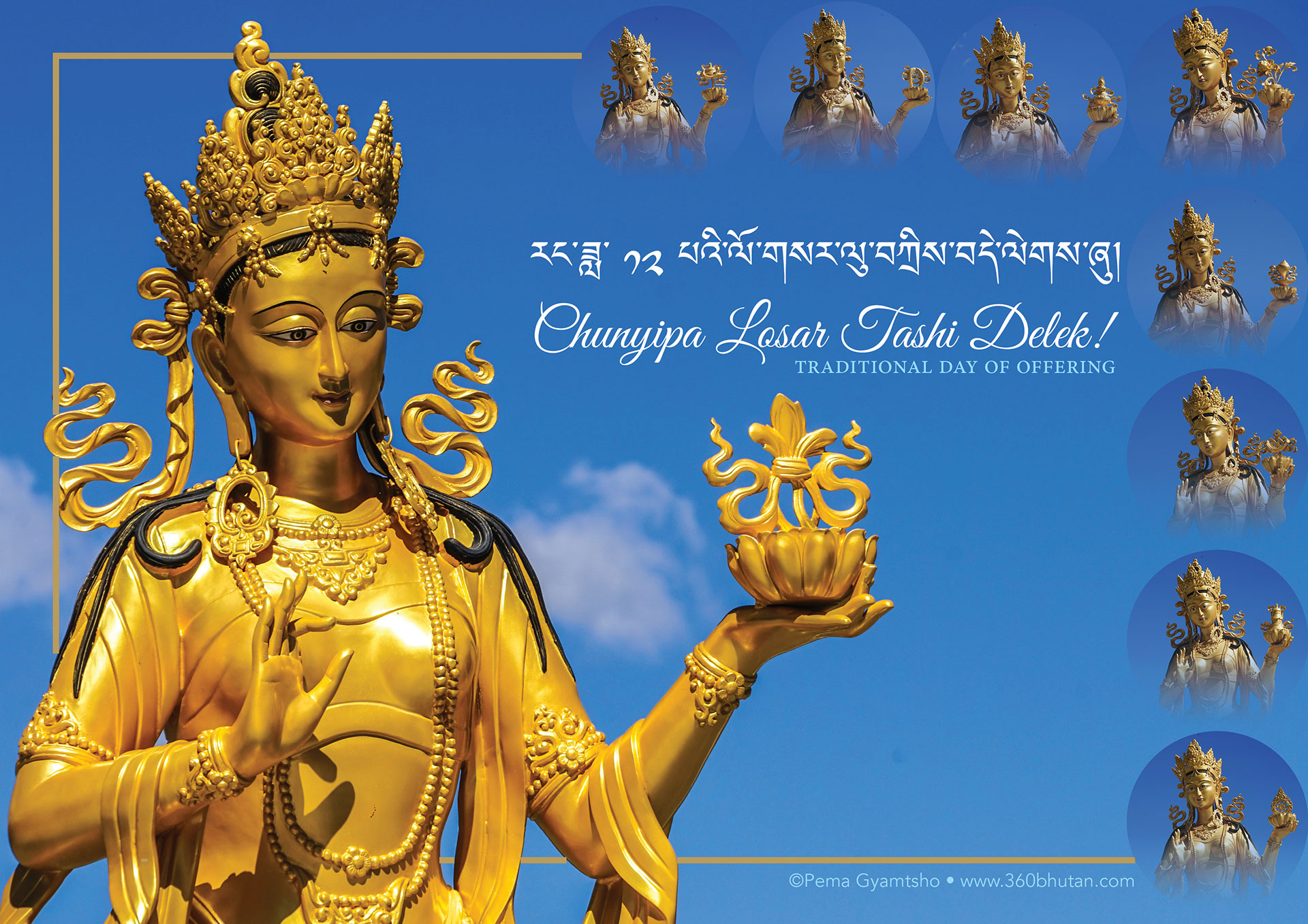Chunyipai Losar
Sonam Chophel and Dr. Karma Phuntsho
Many Bhutanese communities celebrate a losar (ལོ་གསར་) or New Year on the first day of the twelfth month in the common Bhutanese calendar. It is the beginning of the year according to the astrological calculations presented in the Lama Gongdue (བླ་མ་དགོངས་འདུས་) teachings of Sangay Lingpa. As it is observed at the beginning of the twelfth month in the common Bhutanese calendar which was aligned with the Tibetan calendar, which in turn was based on Mongolian calendar, many centuries ago, the New Year is today known as the New Year of the twelfth month (བཅུ་གཉིས་པའི་ལོ་གསར་). It is very likely that this day was the beginning of the year before the common calendar become popular.
In Bhutan, the day is also known as the Traditional Day of Offering as some people claim that the rest of Bhutan made the annual offering of grains to Zhabdrung Ngawang Namgyal in Punakha. The Trongsa Penlop is said to have led the representatives of eight eastern regions, the Paro Penlop, the people of western Bhutan and the Darkar Ponlop the people of the south in order to make offerings. In this regard, some people put a great significance in this New Year as a marker of Bhutan’s sovereignty and solidarity. However, some scholars contest that such practice of making offerings existed as there is no clear evidence. In any case, it is likely that before Zhabdrung Ngawang Namgyal’s unification of Bhutan as a state, the local population in some of Bhutan’s valleys celebrated this day as a New Year. As a result, even the new government of Zhabdrung, then largely a monastic court, saw this time as an important point in time. The retirement and appointment of high officials in the government and the monastic body took place mainly during this New Year celebrations.
As the majority of the Bhutanese population, which observes this New Year is located in eastern Bhutan, it is also common to find the term Sharchokpai Losar (ཤར་ཕྱོགས་པའི་ལོ་གསར་) or New Year of the eastern Bhutan. However, the observance of this New Year is not limited to eastern Bhutan and today with easy communication facilities, migration of people and intermarriages between various regions of Bhutan, people all over Bhutan observe this New Year. Like other Bhutanese seasonal festivals marking a new season, the Chunyipai Losar falls around Winter Solstice when the days start to get longer again. It also falls at the end of all the agricultural work and before the new agricultural season begins. Thus, it is a seasonal celebration which is aligned well with the agricultural life of the population.
The Chunyipai Losar, in the past, was celebrated for several days. Families got together to eat good food, play games and party in the evenings. Men often play games such as archery and women enjoy at home. In the evening, men and women often have parties at one of the households. Today, many families also go out to have picnics lunches. The Chunyipai losar was removed from the list of national holidays at one point but it was reinstated in recent times.
Sonam Chophel and Dr Karma Phuntsho. Sonam Chophel is a researcher at Loden-Shejun Cultural Programme and Research and Dr Karma Phuntsho is a thought leader, social worker and the author of many books and articles including The History of Bhutan.
____
The article first appeared on Facebook page of the Loden Foundation on 6 January 2019.




